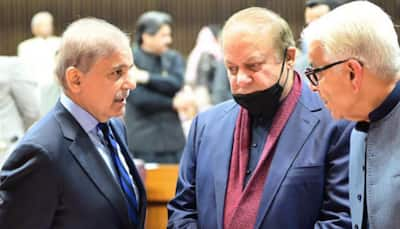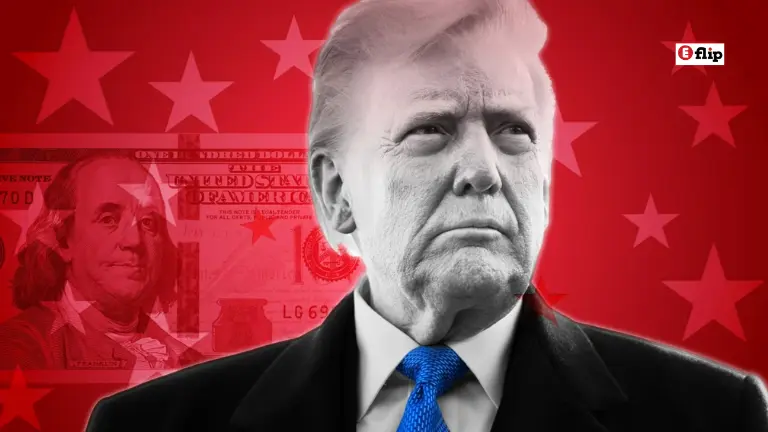It’s April 3, 2025, the news blaring about crashing stock indices, panicked investors, and one phrase that keeps echoing: Trump tariffs among key factors spook markets. As someone who’s watched markets rise and fall over the years, this moment feels different—more personal, more chaotic. It’s not just numbers on a screen; it’s the livelihoods of millions hanging in the balance, and I can’t help but wonder how we got here.
Let’s rewind a bit. The announcement came earlier this week when President Donald Trump unveiled a sweeping set of reciprocal tariffs targeting over 60 countries, including major players like China, Canada, and India. The goal? To bring manufacturing back to American soil and level the playing field. But the fallout has been immediate and brutal. Markets across the globe—Wall Street, Mumbai’s Sensex, London’s FTSE—tumbled like dominoes. The phrase Trump tariffs among key factors spook markets isn’t just a headline; it’s a reality sinking into the bones of every trader, investor, and everyday person with a retirement fund.
The Day the Markets Shook
Picture this: Thursday morning, the opening bell rings on Wall Street, and within hours, the S&P 500 plunges 4.9%, the Nasdaq craters 5.5%, and nearly $2.5 trillion in market value vanishes. I can imagine the traders on the floor, their faces pale, shouting over the noise as screens flash red. It’s not just a bad day—it’s one of the sharpest single-day drops since 2020. And why? Analysts point to one thing above all: Trump tariffs among key factors spook markets.
These tariffs aren’t small potatoes. We’re talking 25% on auto imports, steep levies on tech components, and retaliatory measures already promised by China and Canada. It’s a trade war brewing, and the markets hate uncertainty. I think of my friend Priya, who works in IT in Bangalore. She texted me today, worried about her company’s stock plummeting because of U.S. tariffs on Indian tech exports. “It’s not just Wall Street,” she said. “It’s us too.” That’s the human side of this—Trump tariffs among key factors spook markets, and the ripples reach far beyond New York.
Why Tariffs Scare Investors
To understand why Trump tariffs among key factors spook markets, let’s break it down. Tariffs are taxes on imported goods, meant to protect domestic industries. Trump’s argument is simple: America’s been taken advantage of for too long, and it’s time to bring jobs home. But here’s the catch—global supply chains are a tangled web. Slap a tariff on Chinese steel, and American carmakers pay more. Hike costs on Canadian lumber, and homebuilders feel the pinch. Higher costs mean higher prices for you and me, and that’s where inflation fears creep in.
I remember chatting with my uncle, a small business owner in Ohio, last week. He’s all for “America First,” but when I asked how he’d handle pricier raw materials, he paused. “I’d have to raise prices or cut jobs,” he admitted. That’s the double-edged sword of tariffs, and it’s why Trump tariffs among key factors spook markets. Investors see the domino effect: costlier goods, squeezed profits, and a potential recession looming if trade wars escalate.
The Global Domino Effect
It’s not just America feeling the heat. India’s Sensex crashed 800 points today, with IT, pharma, and metal stocks leading the dive. Europe’s markets followed suit, and Japan’s Nikkei wasn’t far behind. Posts on X are buzzing with reactions—some call it a “Black Friday” for stocks, others blame Trump’s “reckless” policies. One user wrote, “Tariffs are tanking everything. This isn’t a golden age; it’s a disaster.” Whether you agree or not, the sentiment is clear: Trump tariffs among key factors spook markets, and the fear is global.
Take China, for instance. They’ve vowed countermeasures, which could mean tariffs on U.S. soybeans or tech giants like Apple taking a hit. Canada’s not sitting quiet either—retaliation is in the works. I think of my cousin in Toronto, who works in manufacturing. “If this keeps up,” he told me, “we’re all screwed.” That’s the human toll of Trump tariffs among key factors spook markets—it’s not just CEOs and hedge fund managers; it’s families, workers, and communities worldwide.
The Inflation Bogeyman
Here’s where it gets personal for me. Inflation’s already been a headache—grocery bills creeping up, gas prices yo-yoing. Now, with Trump tariffs among key factors spook markets, economists warn of a fresh wave. Higher import costs don’t stay with companies; they get passed to us. A report I read today said consumer prices could jump 5-10% if these tariffs stick. That’s not just a statistic—it’s me rethinking my budget, wondering if I can still afford that weekend coffee run.
And it’s not just me. My neighbor, a single mom, relies on affordable imports for her kids’ clothes and school supplies. “If prices go up,” she said, “I don’t know what I’ll do.” That’s the gut punch of Trump tariffs among key factors spook markets—it’s not abstract; it’s real life.
The Long Game: Hope or Hype?
Trump’s supporters argue this is short-term pain for long-term gain. Bring manufacturing back, they say, and America thrives. Maybe they’re right—years from now, we might see factories humming in the Rust Belt. But the “if” is huge. Trade wars are unpredictable, and history—like the Smoot-Hawley tariffs of the 1930s—shows they can backfire badly. For now, Trump tariffs among key factors spook markets, and the uncertainty is what’s driving the panic.
I talked to a financial advisor friend today, and she was blunt: “Markets hate surprises. This tariff wall? It’s a shockwave.” She’s advising clients to diversify—gold, bonds, anything stable. But for the average person, that’s not an option. We’re just watching, waiting, hoping the storm passes.
A person’s Story Amid the Numbers
Behind every percentage point drop, there’s a story. The retiree whose nest egg just shrank. The factory worker praying tariffs save her job—or don’t cost it. The student wondering if college is still worth the debt in this economy. Trump tariffs among key factors spook markets, but they also spook us—ordinary people caught in a geopolitical chess game.
I’ll admit, I’m torn. Part of me gets the “America First” logic—why shouldn’t we protect our own? But the other part sees the chaos, the fear, the global backlash. Trump tariffs among key factors spook markets, and they’re spooking me too. Where does this end? A stronger U.S. economy or a world in recession? No one knows, and that’s the scariest part.
So, what can we do? Stay informed—keep an eye on how Trump tariffs among key factors spook markets unfold. Talk to your financial planner, adjust your budget, and share your thoughts below. How are these tariffs affecting you? Let’s keep this conversation going—because in times like these, we’re stronger together. Subscribe for updates as this story evolves, and let’s navigate this uncertainty as a community.








